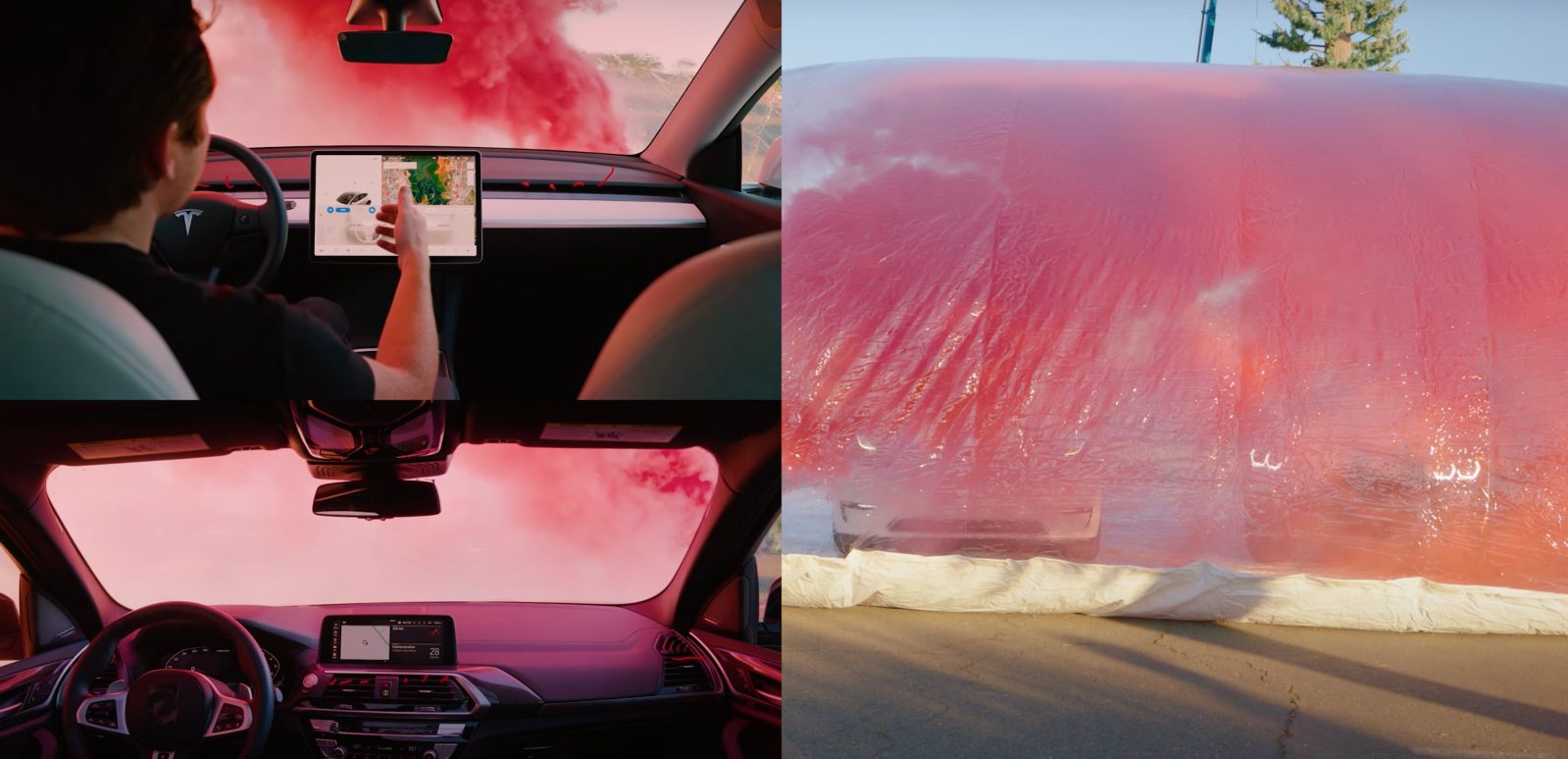
Tesla released an interesting new video demonstration to visualize how its HEPA filter and bioweapon defense mode in the Model Y can keep cabin air clean.
Watch it below.
With the Model X and later the Model S, Tesla has started to put massive HEPA-rated air filters inside its vehicles.
The idea is for Tesla to put efforts into developing a more powerful air filtering system in order to not only contribute to the reduction of local air pollution with electric vehicles but also to reduce the direct impact of air pollution on the occupants of its vehicles.
Tesla CEO Elon Musk credited Google cofounder Larry Page for turning him onto the idea.
The automaker claims that the filter in the Model X is about 10 times larger than a normal car filter, and it is “100 times more effective than premium automotive filters,” as it removes “at least 99.97% of fine particulate matter and gaseous pollutants, as well as bacteria, viruses, pollen and mold spores.”
When it is operating at full blast, Tesla claims that it is powerful enough to protect against a bioweapon attack — hence the name of the mode.
Musk said that Tesla didn’t have space in the Model 3 for a big enough HEPA filter to make the “bioweapon defense mode” work, but the bigger Model Y has the space.
Tesla first introduced the filter and bioweapon defense mode in the electric SUVs produced in China.
Last year, the automaker made it standard in all Model Y vehicles that it produces.
Now Tesla has released a video demonstration about the air filtration system that can successfully help visualize the function:
Tesla released smoke bombs in an air-tight enclosure where both a Model Y and what appears to be a BMW (the company was careful not to focus too much on the baseline vehicle) are parked.
In the Model Y, Tesla activated the “bio-weapon defense mode,” which is a function that basically pressurizes the cabin and forces all the air to go through the HEPA filter.
You can clearly see that the cabin remains smoke free, which doesn’t appear to be the case in the other car.
Now that’s far from a scientific test, especially since they didn’t show what climate controls were on in the other car, but it does help visualize what the HEPA filter is able to catch.
However, when first introducing the feature in the Model X in 2015, Tesla did release some test results with PM2.5 air quality readings that showed the system greatly improved the air quality when needed.
FTC: We use income earning auto affiliate links. More.





Comments